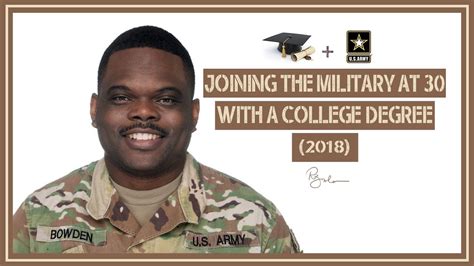Introduction
Enriching one’s life through military service has long been a commendable endeavor. For individuals holding a bachelor’s degree, the Army presents an unparalleled opportunity to advance one’s career while making a meaningful contribution to their nation. This comprehensive guide will elucidate the benefits, requirements, and career paths available to those who embark on this esteemed journey.

Benefits of Joining the Army with a Bachelor’s Degree
1. Immediate Leadership Roles:
Bachelor’s degree holders are eligible for immediate placement as officers, assuming leadership positions within their respective units. This accelerated advancement path provides unparalleled opportunities for professional growth and decision-making.
2. Specialized Training and Development:
The Army invests heavily in training its officers, providing them with specialized skills and knowledge in their chosen field. From medical professionals to engineers and intelligence analysts, degree holders can hone their expertise and become sought-after experts.
3. Educational Assistance and Career Progression:
The Army offers a multitude of educational assistance programs, including tuition reimbursement, scholarships, and loan repayment. Officers can pursue advanced degrees while in service, further enhancing their career prospects.
4. Competitive Pay and Benefits:
Army officers receive a competitive salary commensurate with their rank and experience. They also enjoy comprehensive benefits, including medical and dental coverage, housing allowances, and paid time off.
Requirements for Joining the Army with a Bachelor’s Degree
1. Degree Accreditation:
The bachelor’s degree must be from an accredited institution.
2. Academic Record:
A minimum undergraduate GPA of 2.5 is typically required. For competitive branches, a higher GPA may be necessary.
3. Age:
Applicants must be between the ages of 18 and 42 at the time of commission.
4. Physical and Medical Standards:
Candidates must meet the Army’s physical and medical requirements, including weight, height, and vision standards.
5. Background Investigation:
All applicants undergo a thorough background investigation to ensure their suitability for military service.
Officer Career Paths
Upon joining the Army with a bachelor’s degree, officers can pursue a wide range of career paths.
1. Combat Arms:
Officers in combat arms branches, such as infantry, armor, and artillery, lead troops in combat operations.
2. Combat Support:
Officers in combat support branches, such as engineering, logistics, and medical, provide essential support to combat operations.
3. Combat Service Support:
Officers in combat service support branches, such as transportation, finance, and human resources, ensure the smooth functioning of the Army.
Tips for Success
1. Excel in Physical Training:
Maintaining physical fitness is crucial for success in the Army. Focus on cardiovascular endurance, strength training, and agility.
2. Develop Leadership Skills:
Volunteer for leadership roles in civilian organizations to build practical experience.
3. Network within the Military:
Attend military events, meet with recruiters, and connect with fellow veterans to learn about different career paths.
4. Seek Mentorship:
Identify experienced officers who can provide guidance and support throughout your career.
5. Embrace the Culture:
Immerse yourself in Army culture, values, and traditions to thrive in the military environment.
Conclusion
Joining the Army with a bachelor’s degree is a transformative opportunity that offers individuals a path to leadership, specialized training, and career advancement. For those motivated to serve their nation and make a difference in the world, the Army provides an unparalleled platform for personal and professional fulfillment. Embrace the challenge, meet the requirements, and embark on a rewarding journey in the esteemed ranks of the United States Army.
Tables
Table 1: Army Officer Ranks
| Rank | Abbreviation | Years of Service |
|---|---|---|
| Second Lieutenant | 2LT | Less than 2 years |
| First Lieutenant | 1LT | 2-6 years |
| Captain | CPT | 6-10 years |
| Major | MAJ | 10-15 years |
| Lieutenant Colonel | LTC | 15-20 years |
| Colonel | COL | 20-25 years |
| Brigadier General | BG | 25-30 years |
| Major General | MG | 30+ years |
Table 2: Army Combat Arms Branches
| Branch | Description |
|---|---|
| Infantry | Ground combat operations |
| Armor | Armored vehicle operations and combat |
| Field Artillery | Artillery support for combat operations |
| Air Defense Artillery | Protection against aerial threats |
| Aviation | Helicopter and fixed-wing operations |
Table 3: Army Combat Support Branches
| Branch | Description |
|---|---|
| Engineering | Construction, demolition, and obstacle removal |
| Logistics | Movement and distribution of supplies |
| Medical | Healthcare and medical support |
| Military Police | Law enforcement and security |
| Signal | Communications and information technology |
Table 4: Army Combat Service Support Branches
| Branch | Description |
|---|---|
| Transportation | Movement of troops and equipment |
| Finance | Financial management and accounting |
| Human Resources | Personnel administration and management |
| Quartermaster | Supply, equipment, and maintenance |
| Ordnance | Weapons and munitions management |
